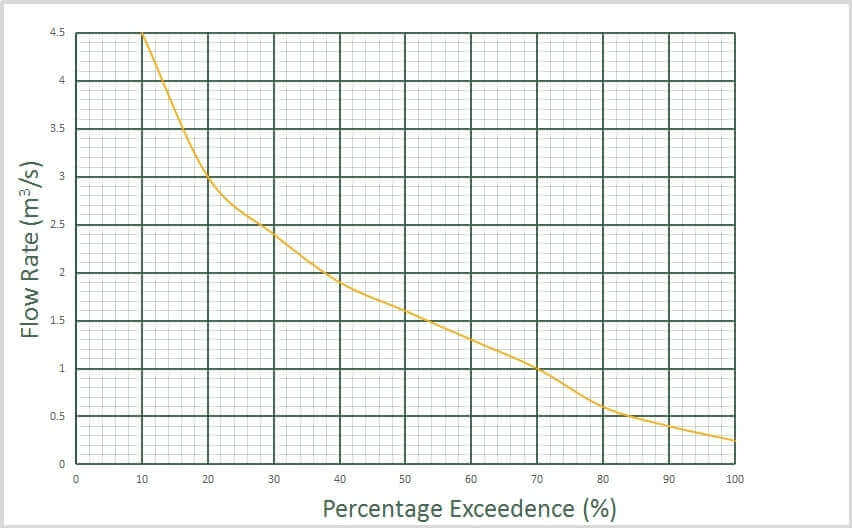Table of Contents
A graphical representation of runoff is called a flow duration curve. It is denoted by FDC. It relates flow rate with duration.
Discharge and time are calculated at first. FDC is then plotted which is used to learn or study floods, evaluate many dependable stream data, design drainage works, etc.
In the FDC:
1. Discharge is plotted on the y-axis(ordinate).
2. Percentage of time duration is plotted on the x-axis(abscissa).
1. Steps For Drawing Flow Duration Curve
1. Calculate the total number of data, say N.
2. Give rank to the data for the data 1,2,3,…., N; say n.
3. Compute frequency(f)
f= Total numbers of data(N) / Rank(n)
4. Compute the probability of exceedance(p)
p= 1/f
p= n/N
5. Now place the discharge in descending order.
6. Draw the probability of exceedance or % of the time versus discharge.
This curve is the FDC.

2. Uses of Flow Duration Curve ( FDC )
Some of the uses of the flow duration curve are:
1.FDC helps to evaluate low-level flows. Flow relating to any % of the time can be obtained by using FDC.
2.Planning and Designing of the hydropower project. Firm power is calculated using flow duration curves in hydropower.
3. The total amount of sediment transported by the river can be found out if FDC along with sediment rating curve is available.
4.FDC also provides runoff variability of the stream.
– If the curve has a steep slope throughout; This indicates that the stream has highly variable discharge. This is the typical condition where the flow is mostly surface runoff.
5. It is used for designing drainage systems.
6. It is in flood control studies.
7. It is used in the calculation of the sediment load and dissolved solids load of a stream.
8. It is used for comparing streamflow data.
9. It is used for evaluating many dependable flows in water engineering projects.
| Read Also: Civil Engineering Hydrology |

